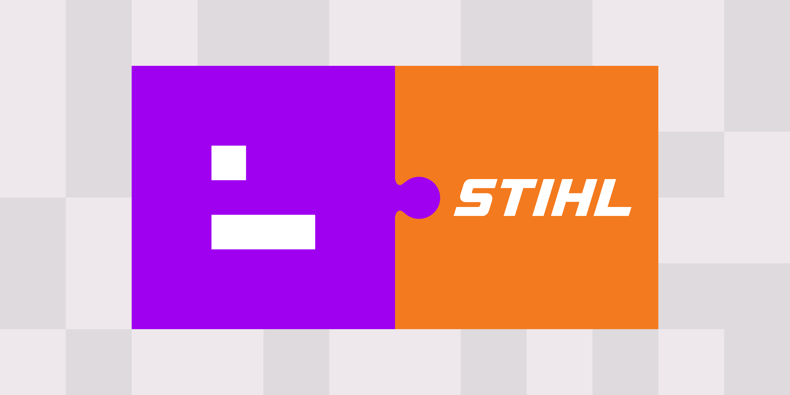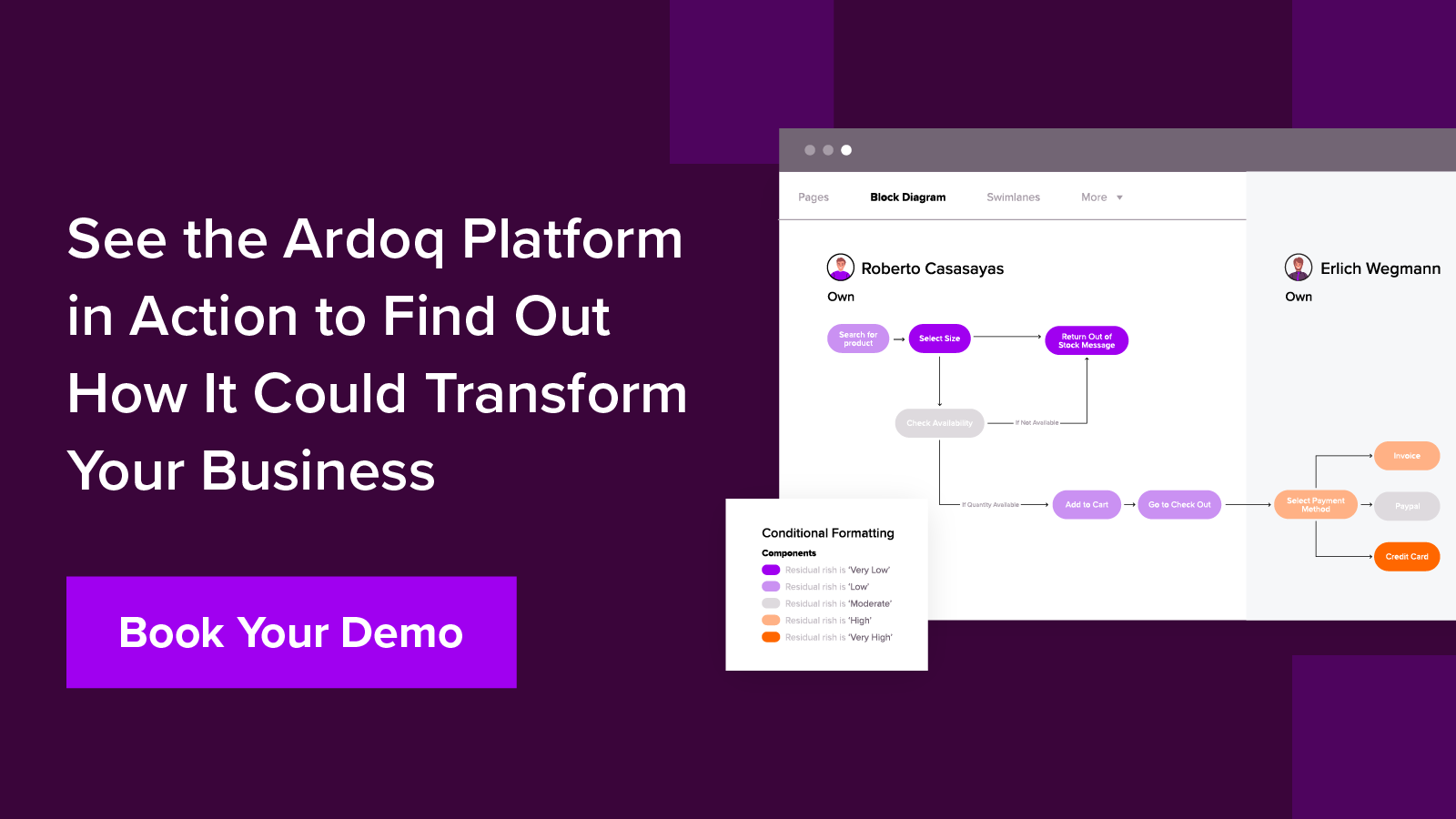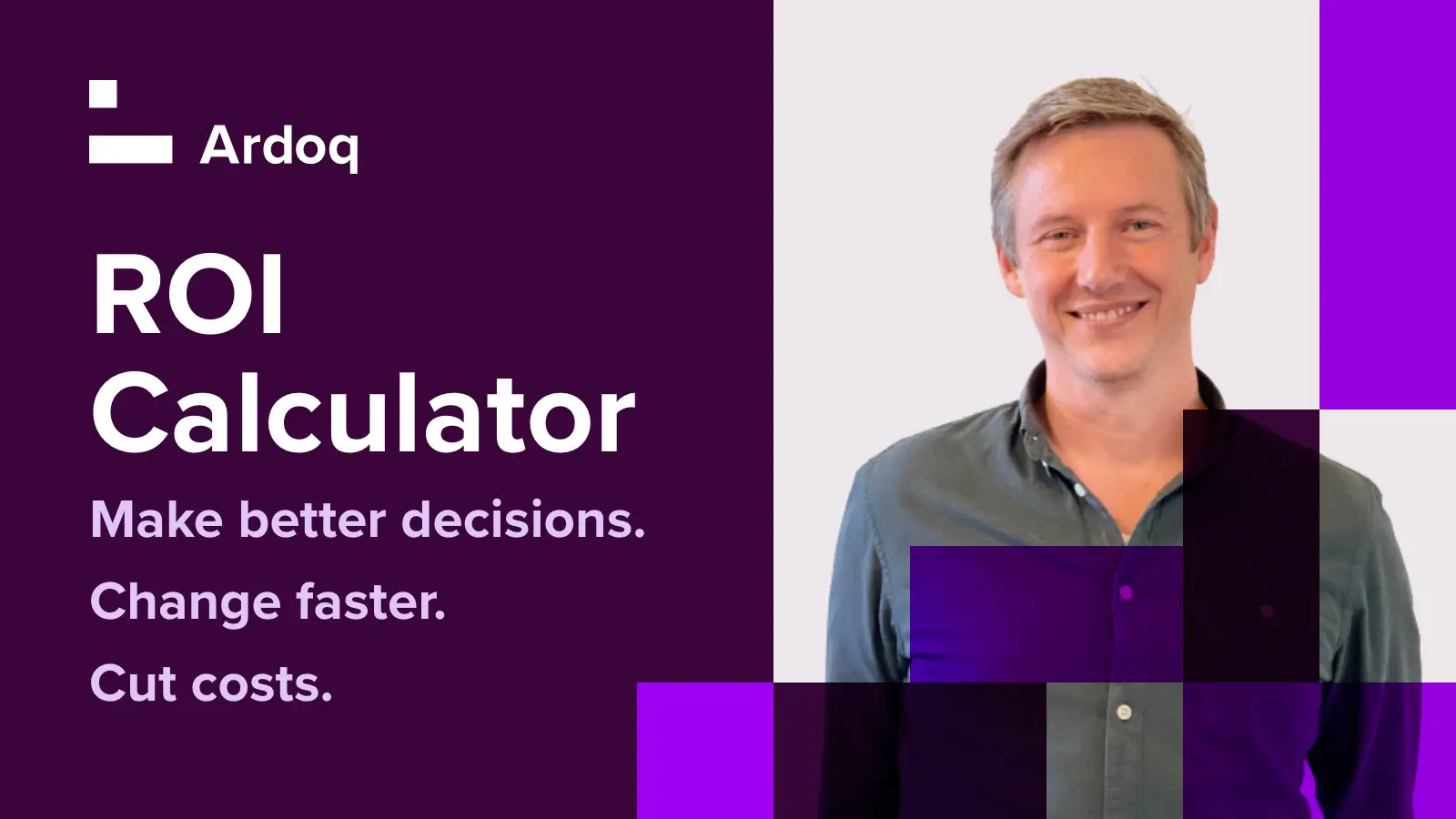STIHL, a world leader in portable outdoor power tools, knows that digital products and services enhance the customer experience and offer valuable features for their products. To tackle the challenge of bringing transparency into the complexity of the business-, data-, application- and technology architectures, STIHL chose to invest in digital transformation.
STIHL’s digitalization efforts have positioned the organization to grow impressively in recent years to continue this pace of change. In 2020, they started the Enterprise Architecture Management (EAM) initiative, forming a new division in the IT department: the Cloud & Data Governance team. The new team supports the company's initiatives by mapping the digital landscape for global scalability. The team, headed by Robert Pröber, Manager of Cloud and Data Governance, is responsible for the underlying platforms and started the Enterprise Architecture (EA) actions.
While comparing EA solutions, the IT team identified Ardoq as the best tool to map the organization’s technical environment and reveal how to execute changes to it more strategically. They knew it as a platform for achieving greater control and driving data-driven business change, but they also realized they’d need to convince leadership why they should invest in tech to manage their existing systems. The team built an Enterprise Architecture ROI business case to show leadership why the platform would be a critical success factor. Then, once the team secured executive buy-in, the platform started improving the IT landscape. Now departments across the organization are interested in adopting it to guide projects.
STIHL is using Ardoq to turn plans into action by supporting a more progressive enterprise architecture function. By having the ability to couple IT with business to drive change, the IT department is able to engage in strategic conversations far sooner in the change process, earning the trust of leadership to govern progress as projects advance.

STIHL at a Glance
❖ The worldwide market leader for chainsaws and other professional-grade power equipment
❖ Headquartered in Waiblingen, Germany, with manufacturing operations in Germany, Austria, Brazil, China, the Philippines, Switzerland, and the USA
❖ Sells to 160+ countries
STIHL’s Goals for an Enterprise Architecture Solution Started With Digitalization
STIHL invested in driving digital transformation because they understand that digital products and services enhance the customer experience and add valuable features to products. Before the change, the IT department delivered classic IT services like Enterprise Resource Planning (ERP), Human Resource Management (HRM), or Infrastructure to support internal processes. With digital transformation, they now worked to enable capabilities for digital products on a large scale, worldwide scope. The business departments in decentralized teams built these capabilities, and the new landscape quickly grew in complexity and the number of applications.
Global reach, scalability, and available technologies led to cloud-based deployments, and Robert's team is responsible for the underlying platforms. In 2020, STIHL started the Enterprise Architecture Management Initiative to tackle the challenge of bringing transparency into the complexity of the business-, data-, application- and technology architectures to enable strategic management.
Because each department used cloud technology in their own silos, the landscape was already quite complex with many initiatives and projects that deployed applications everywhere in the cloud. For full transparency, they first needed to identify and document all the systems and applications within their portfolio and understand how they complied with governance policies.
“Our technology landscape was massively growing, but we did not have business synchronization.” – Robert Pröber
The IT department wanted to expand the scope of how the team was using Ardoq to cut through the IT environment’s complexity. That clarity would provide additional certainty on project timelines to business partners. Increased visibility into its technologies and how they perform would enable the IT department to articulate how to execute business changes in a way that would improve the brand’s time-to-market and value. To gain a centralized overview of all the tools in its possession, along with who used them and for which projects, they enlisted Ardoq for Application Portfolio Management (APM).
Challenge: A Fragmented IT Environment Undercuts Business Momentum
When mapping their systems, STIHL found tech stack ownership distributed across multiple departments. The silos gave departments the advantage of fast decision-making within the departments themselves. It sometimes, however, led to challenges of technical overlap, spending, and the need for tighter system governance, or kept colleagues from aligning on projects that would move the business forward. Additionally, whenever someone needed information about a particular tool within the organization, it was unclear who managed it. In some cases, there were multiple assigned owners. In others, there were none.
You can’t manage what you haven't measured
STIHL decided they wanted centralized oversight into the entire application portfolio, so they could see how IT impacted all functions within the company.
While digging into areas to improve, they noted key points needed to help with future development. First, they knew it was critical to keep compliance and support contracts updated. Second, they wanted to bring proposed projects to life and deliver the intended outcomes. Business issues are rarely exclusive to one unit, so these insights are crucial for pulling plans off successfully. Finally, they wanted employees to be able to anticipate the full impact of any changes, knowing which people and projects were connected.
To complicate matters further, STIHL’s IT team relied heavily on external development partners to create the technologies needed to support the latest products. They found that the external partners became the experts on certain operations, asking questions about impact (e.g., cost or time) to deliver new business ideas, and that takes agency and therefore agility away from the internal team.
"We are better off in paying developers for producing code that differentiates us from the competition, but not for reading complex documentation sheets or even creating them." – Robert Pröber
Building an Enterprise Architecture ROI Business Case in Four Steps
The team knew that securing leadership’s confidence was essential to move plans forward and accomplish organization-wide results. They worried it would be hard to get buy-in for purchasing an EA platform like Ardoq. They wanted to prepare for the question: Why, if the business already used tools like Excel and Vision to manage projects and data, would you invest in another one—especially when the goal is to reign in your existing systems?
The team came up with the answer: create an ROI case for the solution to demonstrate why a modern EA approach and a supporting platform was what they needed to execute change, through the specific project of Application Portfolio Management.
“It took quite a lot of effort to introduce EA methods and to convince management that this is the method that can help us.” – Robert Pröber
To calculate ROI, the pair focused on four ways the current IT landscape was hurting the organization’s budget. Putting these figures together provided the team with a solid case that caught the attention of the business’s senior stakeholders and brought them on board in the purchasing process. More than getting them to approve the budget, leadership’s buy-in would be essential for encouraging the tool’s implementation across the organization.
1. Reducing the Effort for Solution Architecture Sessions
Robert’s team knew they needed a complete overview. They started by calculating how much time it would take to manually gather that overview using existing techniques. Then, they estimated how much time STIHL’s employees lost due to the lack of overview.
While an exact number was difficult to pin down, interviews with colleagues helped them understand and record the current status of the application landscape. They estimated that tasks like manual documentation would take at least 150 hours per year for just repeatedly updating spreadsheets. In addition, they found that EA software would reduce their session workload by half by creating a common language and a meta-model with defined references. More importantly for the team, they would have more time to focus on EA tasks.
“Our goal was to reduce the amount of effort needed to get information on our applications. It requires about a month's worth of time for one person—about €20,000—so Ardoq already pays off because we get the information in just one click.” – Robert Pröber
2. Minimizing Efforts for Technology Risk Management
Taking control of the application landscape through Ardoq has helped STIHL cut technical risk. The single-documentation approach enables the IT team to proactively identify any gaps in capabilities and/or compliance, so they’re less likely to let anything lapse.
Managing lifecycles and contracts also proves another strong point. With Ardoq, they can easily understand when one of their programs no longer supports certain technology and they have a solid overview of what applications and stakeholders will be affected. They calculated the hours that would be spent researching the lifecycle change and the hours needed to talk to application owners regarding expired contracts. They found savings of at least 60% when working with EA software. They knew that with Ardoq, they could see when a contract was close to expiring, and they could easily look at and update the related infrastructure.
“(Now, with Ardoq) we have a portfolio view where you basically see what applications we have, their lifecycle information, who's owning an application, and the cost.” – Robert
Taking control of the application landscape through Ardoq has helped STIHL cut technical risk. The single-documentation approach enables the IT team to proactively identify any gaps in capabilities and/or compliance, so they’re less likely to let anything lapse.
The team is also promoting internal education around using Ardoq to guide their work. When colleagues understand how making changes to certain applications can influence others in the organization, departments are no longer making risky changes. Now they avoid unnecessary costs and eliminate any vulnerabilities in workflows.
3. Identifying Cost-Saving License and Contract Adjustments
The team also included the work associated with application vendors’ change in license and contract adjustments in their ROI calculation. They calculated that manual assessment compliance was costing employees about 20 hours per year for every application, depending on the impact of the licenses.
The team is promoting internal education around using Ardoq to guide their work. When colleagues understand how making changes to certain applications can influence others in the organization, departments are no longer making risky changes. Now they avoid unnecessary costs and eliminate any vulnerabilities in workflows.
“Other departments can see what we are changing, and if others are changing something then we can see that, too. We are constantly enabling them to use Ardoq to create their academic application documentation.” – Robert
With an Enterprise Architecture solution, these tasks could be accomplished with one click, well before the expiration date of the license. The team found they could save one hour per year per application. In a landscape with 100+ applications, the time savings are enormous.
4. Reducing the Application Portfolio Duplicates
The final step of their ROI calculation involved reducing the application portfolio’s size by eliminating duplicate applications or technologies over time. This would result in a reduction in the cost of licenses, and the operational costs of checking the contract’s legal and integrating the application into the landscape. Given the typical cost of a cloud solution or Software as a Service (SaaS) application, they estimated they would get significant savings. Once they could view all applications side-by-side, they could quickly identify duplicate capabilities or applications that added costs and/or slowed operations. In addition, they noticed that since they documented what is in STIHL’s portfolio, the number of requests for new applications has decreased because people know they can choose from the existing base.
“The elimination of duplicates is an easy case. I’m sure other companies are having the same issue and can easily adapt that for their ROI case.” - Robert Pröber
Putting these figures together provided Robert and his team with a solid ROI case that caught the attention of the business’s senior stakeholders and brought them on board in the purchasing process. More than getting them to approve the budget, leadership’s buy-in would be essential for encouraging the tool’s implementation across the organization.
Demonstrating Enterprise Architecture’s Potential to Leadership
The strong ROI case was a success, and soon the team was working to solve STIHL’s fragmented tech landscape. They understood the need to communicate their progress and prove the investment in EA software worthwhile.
The Cloud and Governance Team found Ardoq’s Engagement Platform gave them communication and presentation capabilities critical in this pursuit. Instead of presenting documentation of the company’s technologies, they could configure data to appeal to leadership’s unique business priorities and demonstrate how their efforts map directly to overarching goals.
“Management wants to see what tech is doing, but you have to come up with a high-level overview. Within Ardoq, you can dynamically create presentations. It puts both business management and technical on the same page.” – Heiko Bromberger, Cloud and Data Governance, STIHL
By clarifying the application landscape, the team gave the IT department a clearer understanding of the capabilities available to the organization. From there on out, everyone could use the cross-functional applications STIHL already has to support business demands instead of automatically purchasing new ones. This has also greatly improved communication with business partners since the team understands how quickly it can deliver on projects.
“We are seeing the departments starting to also use the application portfolio. They are not looking outside and trying to get something new, and that's really, really helpful.” – Robert Pröber
The platform allows the IT department to designate application owners so that STIHL employees always know who to turn to for information to guide their projects. From there, Ardoq outlines workflows so individuals can see how the tools are being put to work across the company.
As the new source of data for STIHL’s technology insights, Ardoq has transformed the organization’s IT department into a self-service operation. No more chasing teammates down for application information or working in silos; the team is now able to act quickly with all the information they need right at their fingertips.
“[With Ardoq] we save time and therefore, in the end, money. Ardoq is the single point of truth. There is no discussion on where to look when you need information.” – Heiko Bromberger
Coupling IT With Business to Drive Change
Ardoq empowers STIHL’s IT department to be a much more strategic and involved component of the larger organization. They’re who the team leadership turns to when in need of insights.
With IT information consolidated into one base, the team can make quick recommendations on how to achieve management’s objectives. Ardoq’s dynamic and automated modeling creates detailed and actionable plans on how to make these goals a reality and shows which IT capabilities and employee talents can be leveraged.
Armed with an enterprise-wide viewpoint, the IT department can ensure that plans not only solve the singular problem at hand but also contribute to larger company goals.
“That's where Ardoq helps us most, giving us an approach that adopts digitalization and agile development (using) ... a modern cloud based SaaS application. It helps us in documenting and keeping track of those agile products and processes that are making STIHL a digital company and producing digital products.” – Robert Pröber
How Ardoq Is Enabling a New IT Vision at STIHL
Since the Cloud and Data Governance team sold leadership on investing in Enterprise Architecture software, it’s been functioning as a faster, smarter arm of the organization. Now, the entire enterprise leans on the platform to understand the intersection of business and IT to arrive at decisions that have a positive impact.
With Ardoq, STIHL experiences:
◆ Flexibility: Whereas other tools are rigid in their EA approach, Ardoq understands that every organization is different. Configurable features empowered STIHL’s team to do Enterprise Architecture in a way that made sense for their unique business needs.
◆ Trust Between Teams: Before STIHL could achieve a truly progressive EA function, they established trust across the organization. Using Ardoq’s Application Portfolio Management (APM) showed STIHL’s leadership that they had control over their department which, in turn, kick-started the flow of opportunities.
◆ 360-Degree Insights: STIHL found that using Ardoq’s APM streamlined the system by keeping all the information in one place. This gave them a holistic viewpoint of their enterprise from both a technology and business perspective. In addition, it decreased the risks and costs of having Shadow IT.
◆ More Constructive Conversations: Ardoq bridged the gap between business and IT by presenting EA data in a way that made sense to STIHL’s business leaders—without having to rewrite their data models. Adaptable Ardoq Presentations meant everyone heard the information they needed.
Equipped with a forward-leaning EA team and Ardoq as an important tool, STIHL has the insights they need to move with agility and outpace the competition in an increasingly tech-centric world.
Want to see how Ardoq can help your organization align the IT strategy with your overall strategic objectives? Book a demo with an Ardoq specialist.
 Ardoq
This article is written by Ardoq as it has multiple contributors, including subject matter experts.
Ardoq
This article is written by Ardoq as it has multiple contributors, including subject matter experts.




/Logos/Ardoq/RGB_Ardoq_Logo_Stacked_White_Monochrome%201.png?width=80&height=77&name=RGB_Ardoq_Logo_Stacked_White_Monochrome%201.png)

